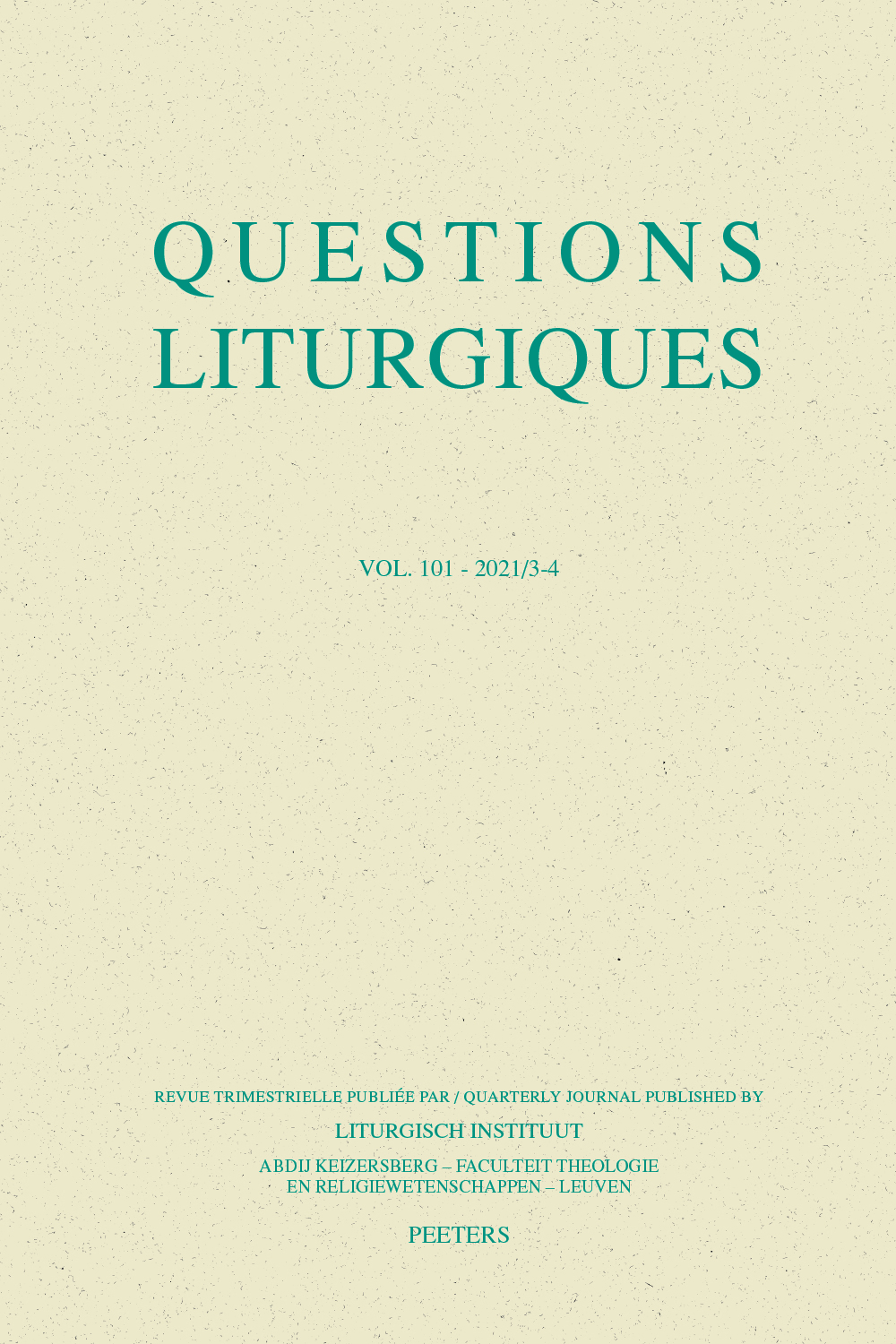 previous article in this issue previous article in this issue | next article in this issue  |

Preview first page |
Document Details : Title: A Liturgical Study of the Proper Prayers for St Charles of St Andrew Houben, C.P.: (1) The Opening Prayer Author(s): LEACHMAN, James G. , McCARTHY, Daniel P. Journal: Questions Liturgiques/Studies in Liturgy Volume: 92 Issue: 1 Date: 2011 Pages: 29-45 DOI: 10.2143/QL.92.1.2067484 Abstract : We have collaborated for the first time on the study of a prayer from the Sanctoral cycle. What is interesting is the bipartite structure of the prayer, like the twin shells of a clam, The two parts correlate the graced action of the saint with the graced action of the church; the anamnetic and the epicletic, and reinterpreting both anamnetic and epicletic in the light of graced human action. There are two textual problems in this prayer. To correct them we suggest supplying the missing qui and changing procurare to curare. In this newly constructed prayer for the feast of St Charles of St Andrew Houben (of Mount Argus), unlike the orations of the Sundays in Ordinary Time we see the ecclesial character of the prayer, expressing our communion with the saints and the discernment of authentic vocation existing in the practice and fruits of authentic charity. Nous avons collaboré pour la première fois à l’étude d’une prière du cycle sanctoral du Missale Romanum. La structure bipartite de la prière est très intéressante, formée comme les deux parties d’un mollusque bivalve. Les deux parties relient l’action du saint avec l’action de l’Église; l’anamnèse et l’épiclèse interprètent aussi bien l’anamnèse que l’épiclèse dans la lumière de l’action humaine. Ils existent deux problèmes textuels dans la prière et pour les corriger on suggère l’addition d’une qui manquant et de changer le procurare en curare. Dans cette nouvelle prière pour la fête de St. Charles de St André Houben (du Mont Argus à Dublin), contrairement aux oraisons des dimanches du temps ordinaire, on voit le caractère ecclésiale de la prière, qui exprime notre communion avec les saints et le discernement d’une vocation authentique qui existe dans l’exemple et la pratique d’une charité authentique. |
|


